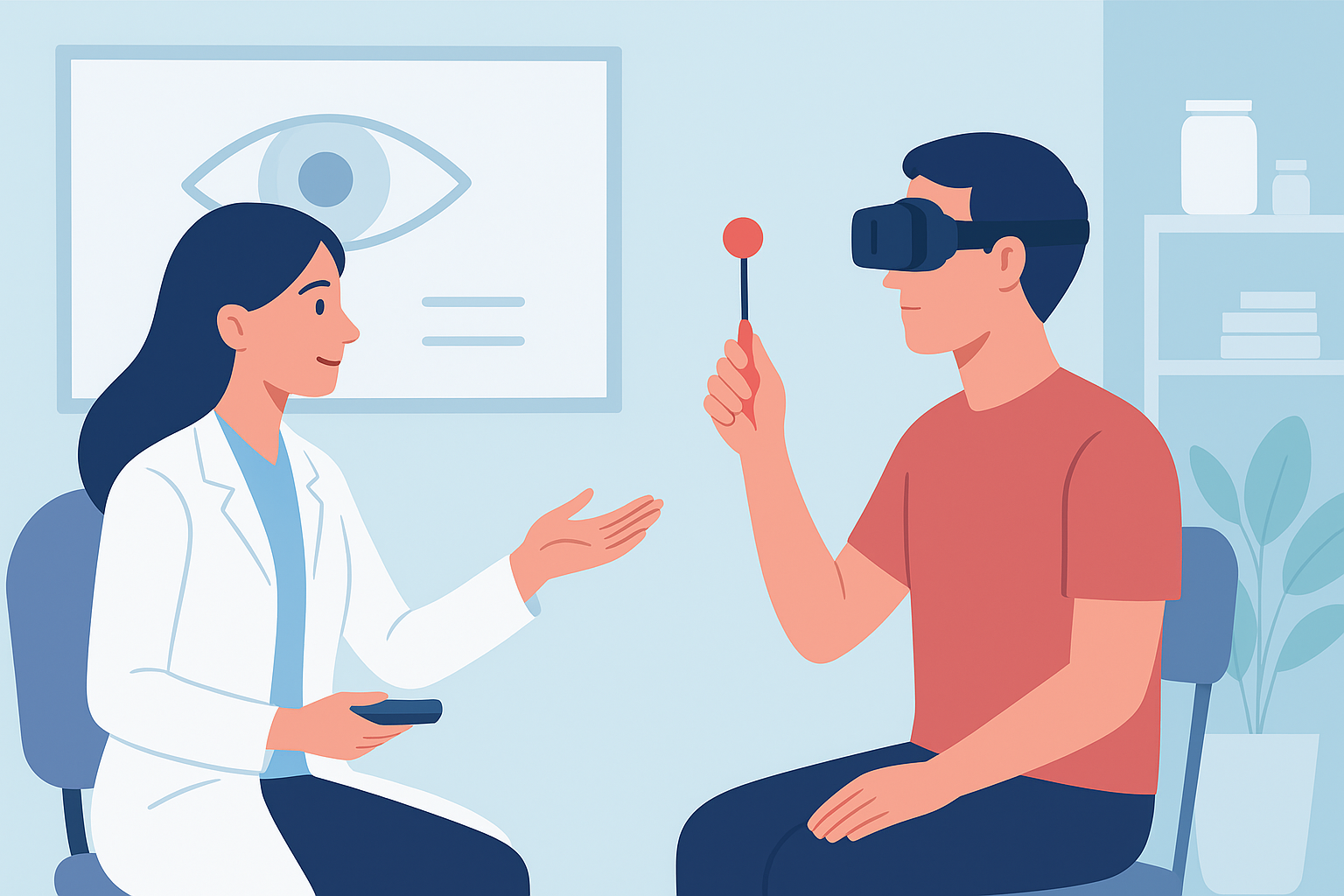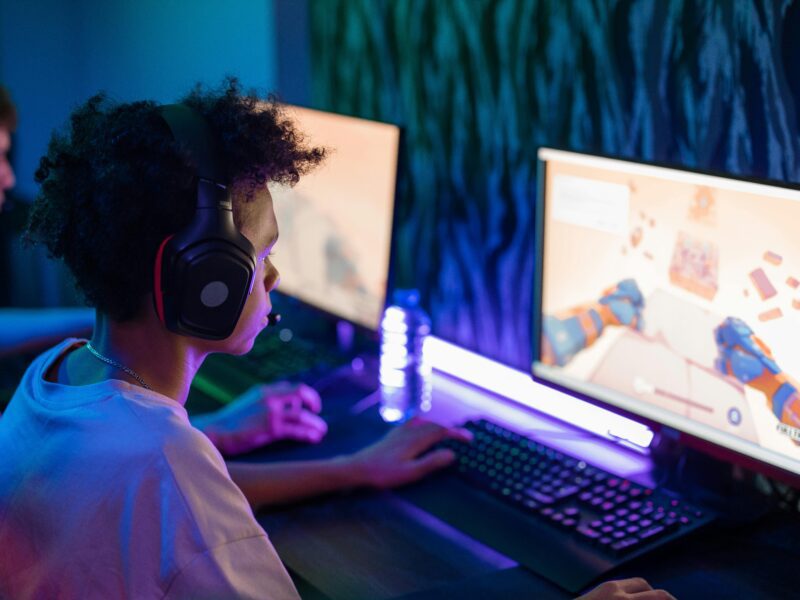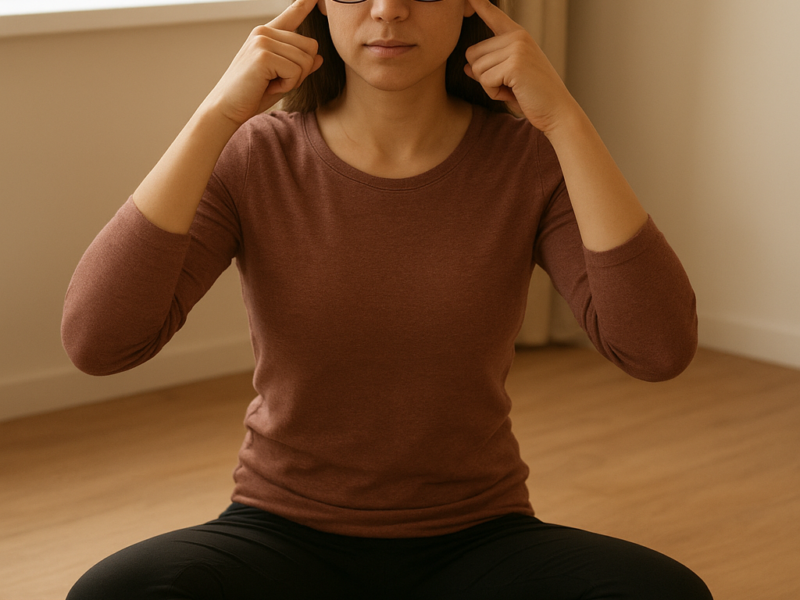Introduction: Why Vision Therapy Matters
Our eyes are more than just organs that capture images—they are active participants in a complex visual system that coordinates with the brain to process and interpret the world around us. When this system is not working efficiently, it can result in eye strain, double vision, poor focus, or even learning difficulties.
Vision therapy is a non-surgical, customized treatment designed to improve visual skills and address problems that glasses, contact lenses, or surgery alone cannot fix. Unlike simple corrective lenses that sharpen vision, vision therapy retrains the brain and eyes to work together more effectively.
In this guide, we’ll cover what vision therapy is, the science behind it, who can benefit, the conditions it treats, and what results you can expect.
👉 If you’re interested in how eye health impacts daily life, check out our full guide on How Often Should You Get an Eye Exam?
What Is Vision Therapy?
Vision therapy (also called orthoptic training or visual training) is a structured program of visual activities prescribed by optometrists or ophthalmologists.
It’s often compared to physical therapy for the eyes and brain. Just as physical therapy can strengthen muscles and improve coordination, vision therapy enhances eye teaming, focusing, and tracking skills.
Key components of vision therapy include:
- Eye-tracking exercises (following moving objects accurately)
- Binocular vision activities (training both eyes to work together)
- Focusing drills (improving near-to-far vision shifts)
- Eye-hand coordination tasks
- Use of lenses, prisms, filters, and digital tools to stimulate visual processing
Programs are usually performed in-office under professional supervision, combined with at-home reinforcement exercises.
👉 Want to compare therapy with other correction methods? Don’t miss our article on Contact Lenses vs Glasses: Pros and Cons.
The Science Behind Vision Therapy
Vision is not just about the clarity of sight—it’s about how the brain processes information. Up to 80% of learning in children is visual, meaning that even small inefficiencies in vision can have a significant impact.
For example:
- If the eyes don’t work well together (binocular dysfunction), the brain may suppress one eye’s input, leading to lazy eye (amblyopia).
- If eye movements are inaccurate, reading can be slow and tiring.
- If focus cannot be maintained, near work (like studying or computer use) can trigger headaches and fatigue.
Vision therapy strengthens the connection between the eyes and the brain, improving both functional vision and comfort.
👉 Curious about how nutrition also supports your eyes? Read our detailed post on Antioxidants and Vision: How Vitamins A, C, and E Protect Your Eyes.
Conditions Treated with Vision Therapy
Vision therapy is widely used for:
1. Amblyopia (Lazy Eye)
- Traditional treatment involves patching the stronger eye.
- Vision therapy provides more dynamic stimulation, encouraging both eyes to work together.
2. Strabismus (Eye Turn / Crossed Eyes)
- Helps align eyes without surgery in some cases.
- Improves binocular vision, reducing double vision and suppression.
3. Convergence Insufficiency
- Difficulty keeping the eyes turned inward for near tasks.
- Commonly causes eye strain, headaches, and blurred vision during reading or computer work.
4. Accommodative Dysfunction
- Problems focusing between near and far.
- Frequent in children and adults with prolonged screen exposure.
5. Visual Processing Disorders
- Often seen in children with reading or learning difficulties.
- Enhances visual memory, tracking, and comprehension.
6. Post-Trauma Vision Syndrome
- After concussions, strokes, or traumatic brain injury.
- Restores eye coordination, balance, and focus.
Who Can Benefit from Vision Therapy?
Vision therapy is beneficial for a wide range of individuals:
- Children with learning difficulties: Many cases of “reading problems” are related to undiagnosed vision issues.
- Adults with eye strain from digital devices: Helps improve focus and reduce headaches.
- Athletes: Enhances reaction time, depth perception, and hand-eye coordination.
- Patients with neurological conditions: People recovering from concussions, strokes, or brain injuries.
- Individuals with double vision or crossed eyes: Non-surgical management options are available.
👉 Children are often key candidates—see our full guide on Myopia Control for Kids: Atropine, Ortho-K & Outdoor Time
What to Expect During Vision Therapy
1. Initial Eye Examination
- Includes detailed testing beyond standard eye charts.
- Assesses eye coordination, depth perception, tracking, and visual processing.
2. Customized Treatment Plan
- Tailored to the patient’s condition and goals.
- May involve in-office visits (1–2 times per week) and at-home exercises.
3. Types of Exercises
- Using prisms to stimulate eye teaming.
- Computerized programs for focus and coordination.
- Eye-tracking games with moving targets.
- Balance and spatial awareness activities.
4. Treatment Duration
- Typically lasts several months, depending on the severity of the condition.
- Progress is measured regularly to adjust the program.
Effectiveness of Vision Therapy: What Research Says
Numerous clinical studies show that vision therapy can be highly effective:
- The Convergence Insufficiency Treatment Trial (CITT) demonstrated significant improvement in children treated with office-based vision therapy.
- Patients with amblyopia have reported improved acuity and depth perception compared to patching alone.
- Adults with digital eye strain often experience reduced symptoms after consistent therapy.
While results vary, most patients report noticeable improvements in comfort, performance, and quality of life.
👉 For age-related challenges, explore Presbyopia: Why Reading Becomes Harder With Age.
Myths and Misconceptions About Vision Therapy
- “It’s only for kids.”
Not true—adults can also benefit from vision therapy. - “It can replace glasses or surgery.”
Glasses correct refractive errors (blurry vision), while vision therapy targets functional issues. - “It’s unproven.”
Scientific evidence supports its effectiveness for specific conditions like convergence insufficiency and amblyopia.
Integrating Vision Therapy with Lifestyle Changes
To maximize results:
- Take regular screen breaks (20-20-20 rule).
- Ensure proper lighting and posture while reading.
- Encourage outdoor play for children to promote healthy eye development.
- Combine with nutritional support (antioxidants, lutein, omega-3s).
👉 Lifestyle habits also affect sleep and recovery—discover more in The Role of Sleep in Maintaining Eye Health.
Conclusion
Vision therapy is more than eye exercises—it’s a powerful, science-backed way to retrain the brain and eyes for optimal performance. From children struggling with reading to adults experiencing digital strain, countless individuals can benefit from this non-invasive treatment.
By understanding who benefits, how it works, and what to expect, patients can make informed decisions about incorporating vision therapy into their overall eye health strategy.
🛒 Recommended Vision Health Products
To support your eye health and complement vision therapy, here are some carefully selected products you may find helpful:
- Blue Light Blocking Glasses – Protect your eyes from digital strain during work or gaming.
👉 Check Price on Amazon. - Lutein & Zeaxanthin Eye Supplements – Clinically studied antioxidants that promote macular and retinal health.
👉 Shop Now - Palming & Vision Therapy Exercise Kit – Simple at-home tools to practice focusing and relaxation exercises.
👉 Buy Here - Adjustable LED Desk Lamp with Eye-Care Technology – Reduces glare and provides optimal lighting during reading or therapy sessions.
👉 See Details - Moisturizing Eye Drops (Preservative-Free) – Ideal for relieving dry eyes often linked to prolonged therapy or screen use.
👉 Order Now - Vision Health Books (Professional Guides on Vision Therapy & Eye Exercises) – Expand your knowledge with practical strategies from eye specialists.
👉 Browse Books


